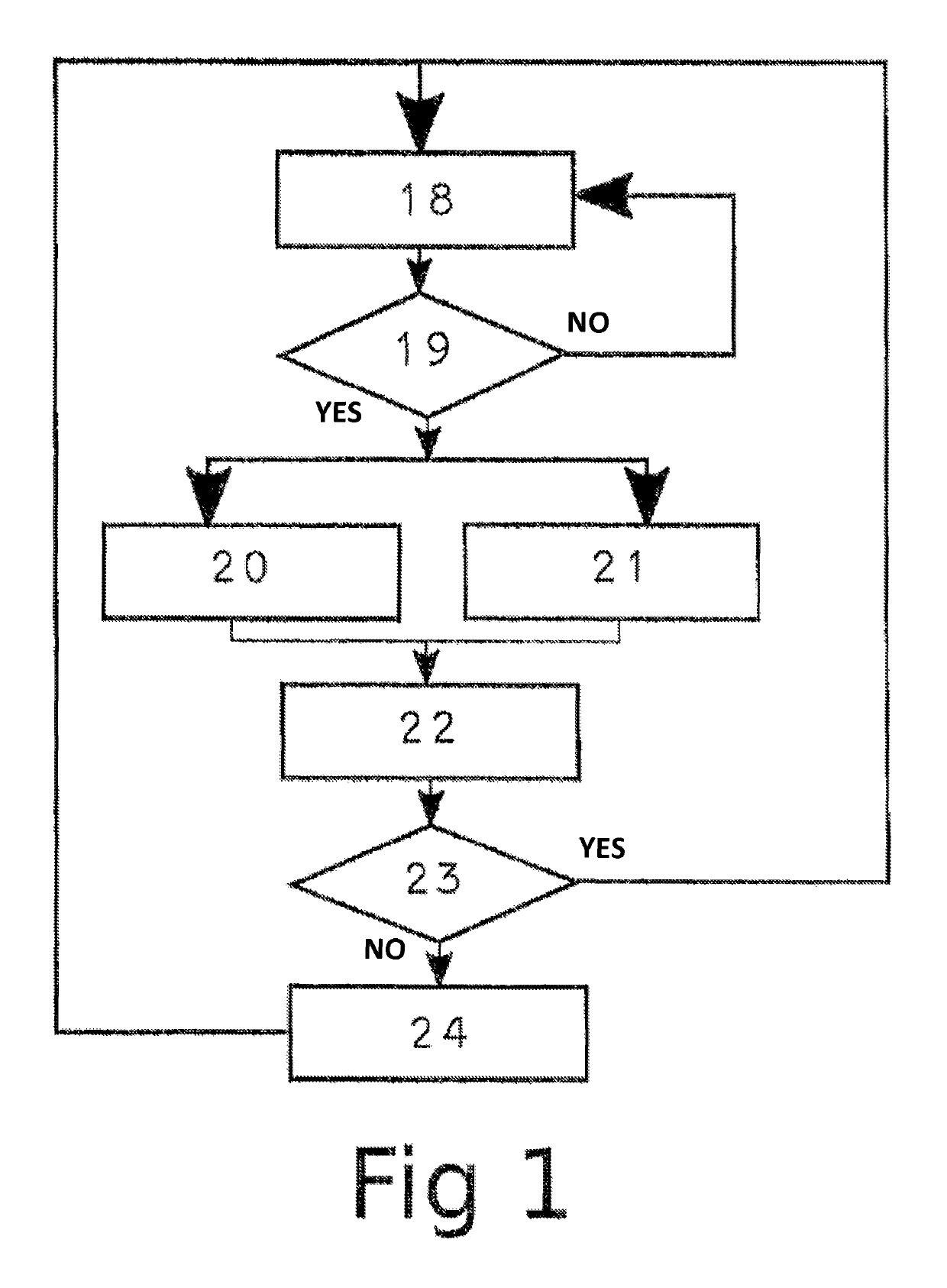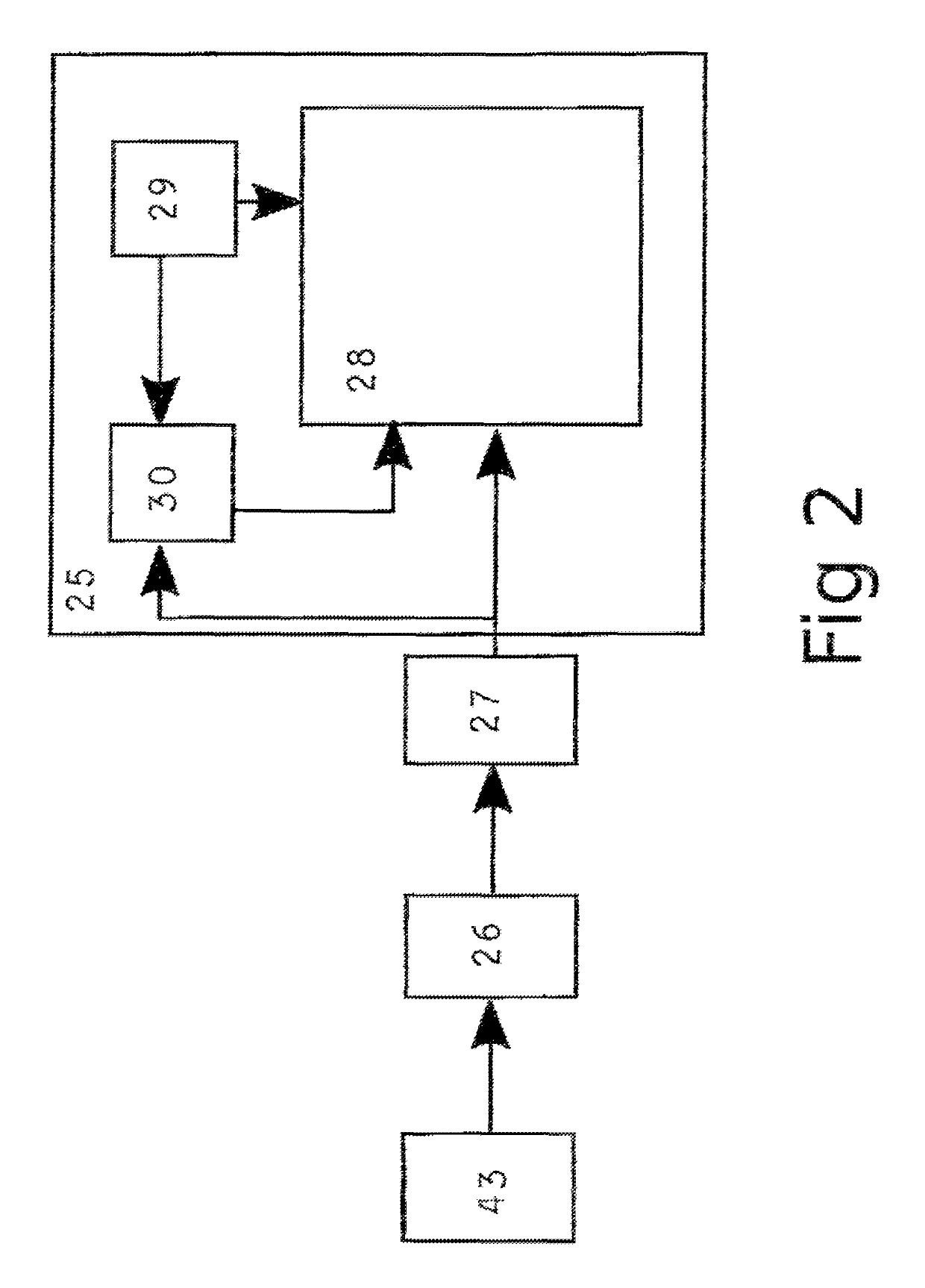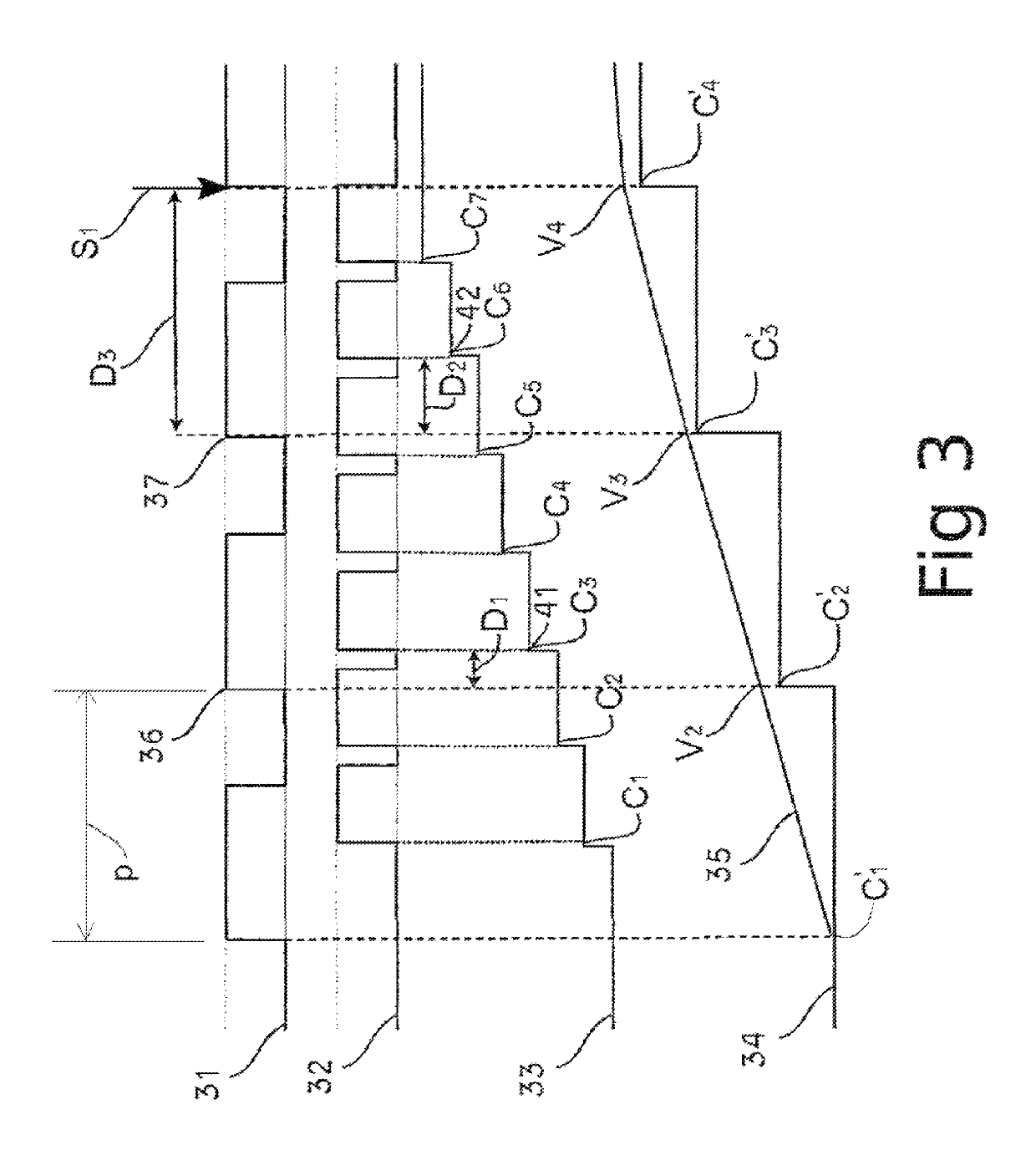Process and device for acquisition of data of a counting device measuring pulses delivered by a sensor
a counting device and data acquisition technology, applied in the direction of optical conversion of sensor output, instruments, etc., can solve the problems of lag in relation to the change of value of the counting device, inability to represent the instantaneous real positioning of the mobile unit, and expensive use of high-frequency sampling clocks. , to achieve the effect of less calculation
- Summary
- Abstract
- Description
- Claims
- Application Information
AI Technical Summary
Benefits of technology
Problems solved by technology
Method used
Image
Examples
Embodiment Construction
[0059]An embodiment of the process according to the present disclosure, represented in FIG. 1, enables each source value of a counting device to be adjusted by a data acquisition device in order to obtain values that are representative of the positioning of a mobile unit associated with the sensor. The process includes a step 18 of sampling of a datum value C of the counting device, named current sampling C′x, by the data acquisition device. The sampling is carried out in accordance with a sampling frequency corresponding to a sampling period. Then, a test 19 is carried out, in order to determine whether the value C′x is representative of an incrementation of the counting device—that is to say, if this value has not already been read or sampled previously. If the value C′x is not representative of an incrementation, the process is repeated, beginning by a sampling of a new source value in step 18.
[0060]It is noted that C is a count value wherein Cy is the value held by the counting ...
PUM
 Login to View More
Login to View More Abstract
Description
Claims
Application Information
 Login to View More
Login to View More - R&D
- Intellectual Property
- Life Sciences
- Materials
- Tech Scout
- Unparalleled Data Quality
- Higher Quality Content
- 60% Fewer Hallucinations
Browse by: Latest US Patents, China's latest patents, Technical Efficacy Thesaurus, Application Domain, Technology Topic, Popular Technical Reports.
© 2025 PatSnap. All rights reserved.Legal|Privacy policy|Modern Slavery Act Transparency Statement|Sitemap|About US| Contact US: help@patsnap.com



